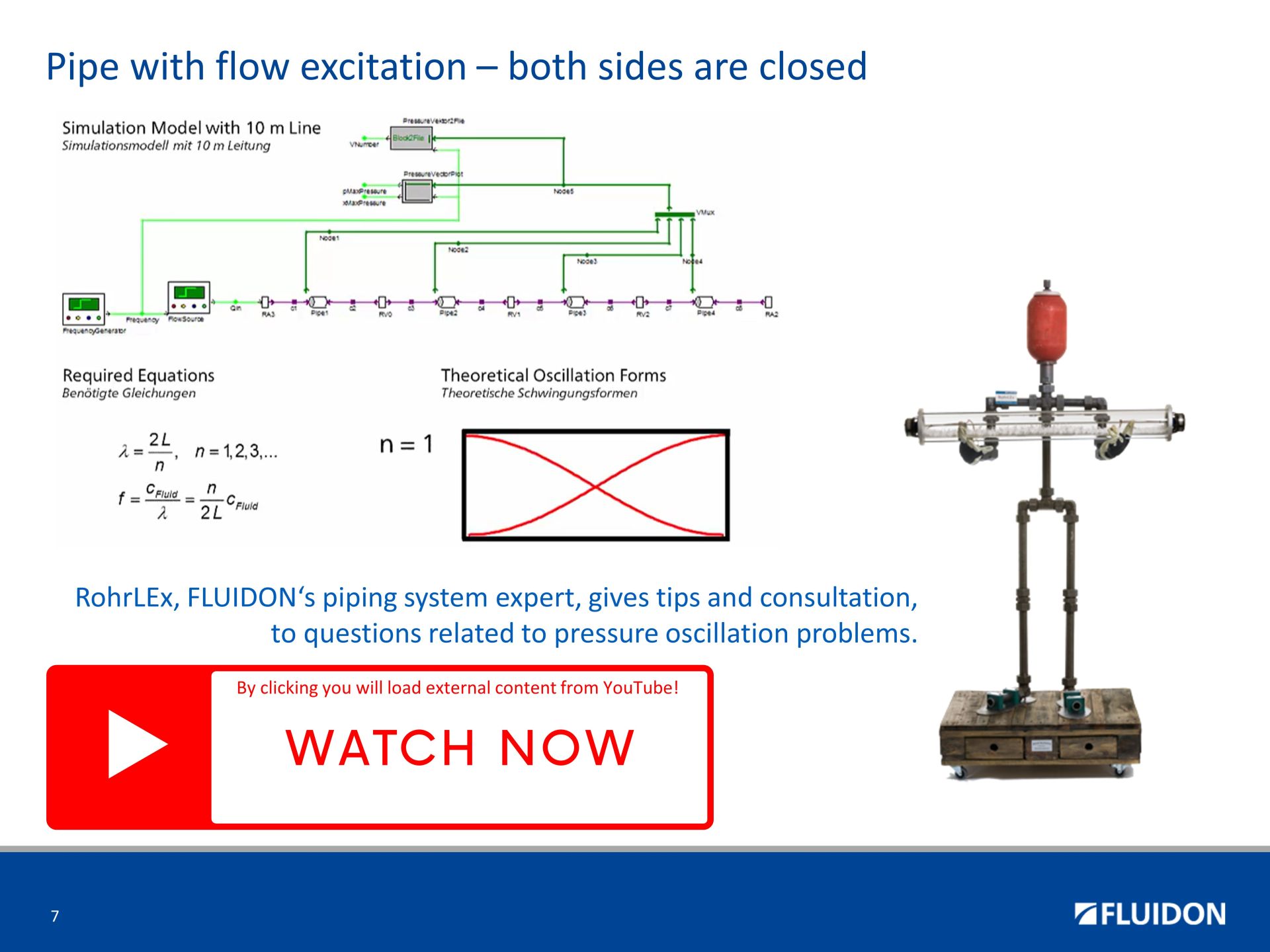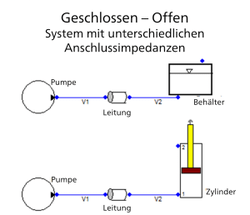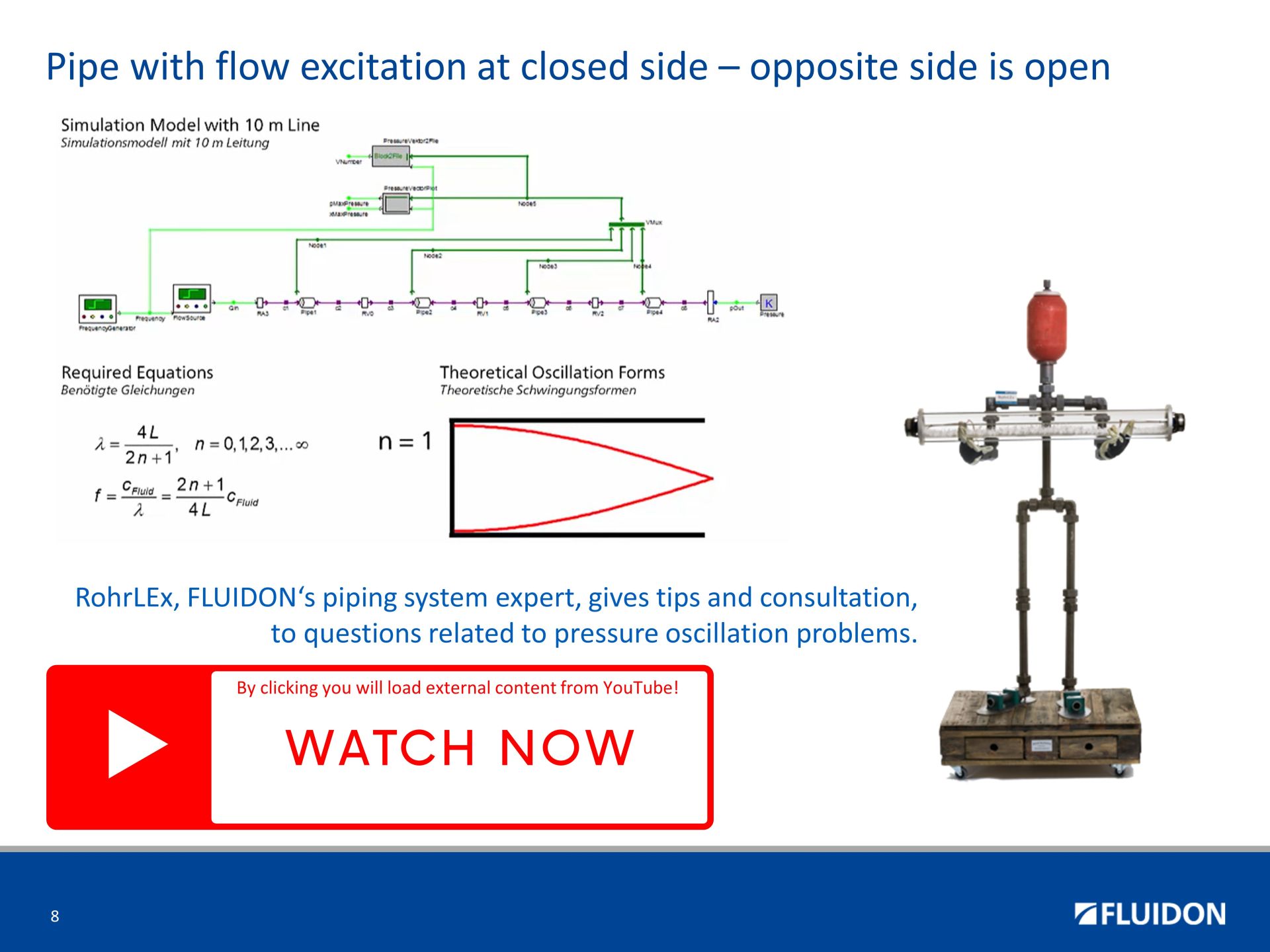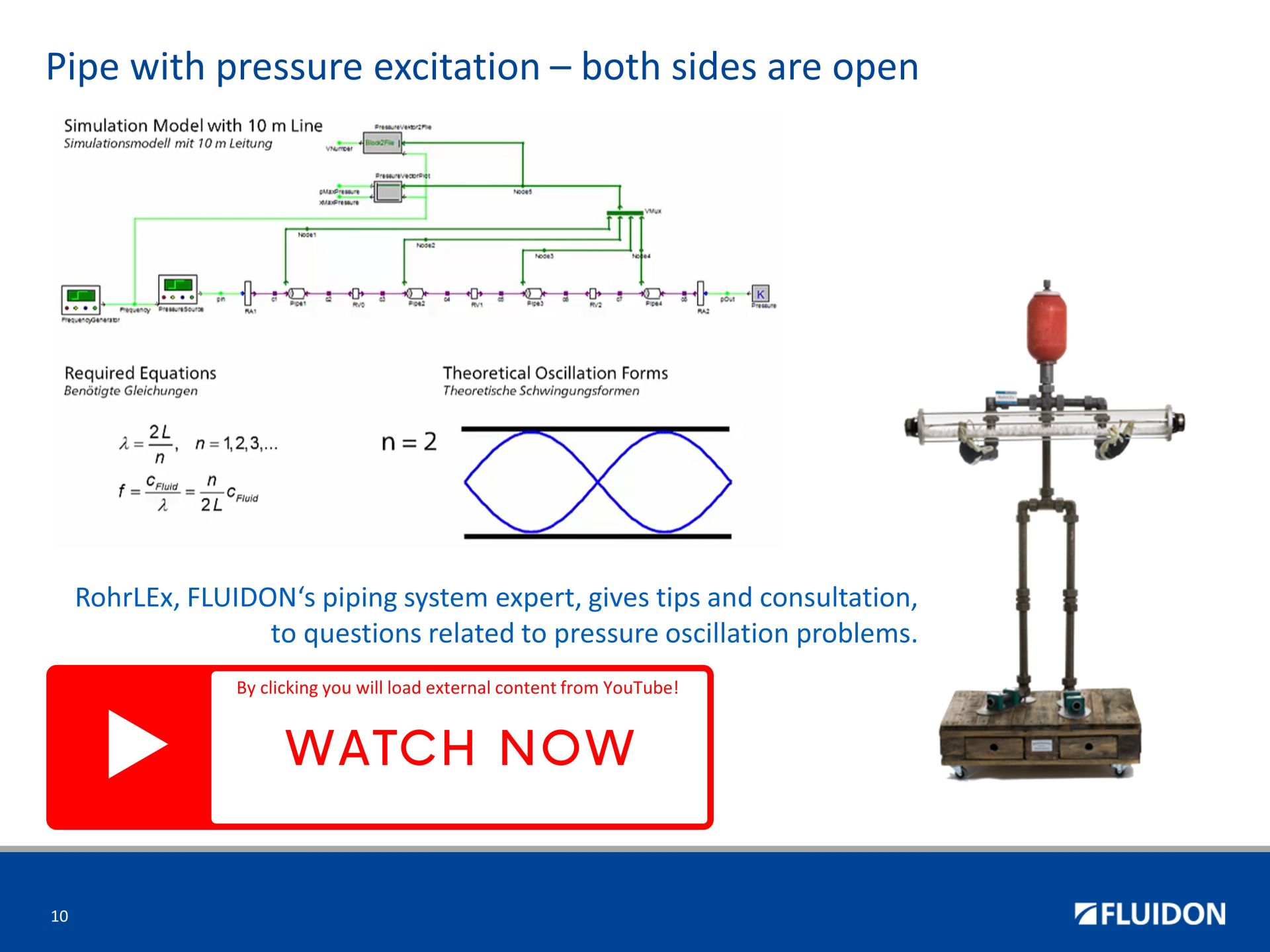Oscillation modes in piping systems
When analysing pressure pulsation, RohrLEx always starts with an overview of the general resonance situation in the pipe system. It is important for RohrLEx to know which pulsation sources exist, what the topology of the pipe system is like and, above all, what the pipe terminations look like. The type of pipe terminations has a significant influence on the waveform (vibrational/normal modes) that occur in the pipe system.
What types of vibrational modes are there?
The modes in a simple hydraulic pipeline can be divided into the two categories of "identical termination" or "opposite termination". In this context, one also refers to the termination impedances of the line. The termination impedances determine whether a so-called λ/4 or a λ/2 vibrational mode is formed. In this context, "identical" means that both line terminations are either "open" (reflection factor of -1) or "closed" (reflection factor of 1) with regard to their wave reflection behavior. In the case of opposite terminations, one pipe end is "open" and the other "closed".
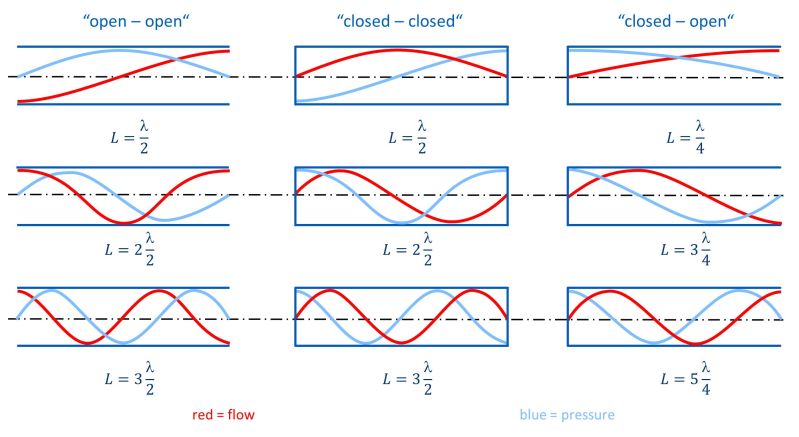
The vibrational mode determines at which point of the pipe system pressure nodes and antinodes are located. Knowledge of the pressure antinode position is important for positioning a damping measure or an attenuator (resonator).
RohrLEx has also published a flyer on vibrational modes in hydraulic networks which presents hydraulic example systems with their respective natural modes and describes how the vibrational mode withinin a cylinder drive changes depending on the stroke.
Oscillation modes of liquid resonances in a pipe closed at both ends
Oscillation modes of liquid resonances in a pipe open at one end - excitation at the closed end
Oscillation modes of liquid resonances in a pipe open at one end - excitation at the open end
The "open-closed" vibration condition often occurs in vehicle hydraulic systems in which the road surface causes vibration excitation on the steering cylinder or air spring. As a result, a flow rate pulsation is then generated in the system, which causes a disturbing pressure pulsation at the valve, if the λ/4 resonance frequency is excited.
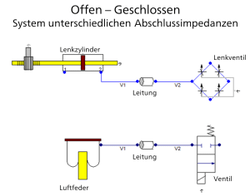
Oscillation modes of liquid resonances in a pipe open at both ends
The application case "open - open" is given when two pressure reservoirs (e.g. large vessels) are connected by a pipeline. This application is rather rare in hydraulic systems. In practice, however, it may occur if, for example, a pump is used together with an accumulator in a constant pressure system and both components are connected to an extended cylinder via a pipeline.






